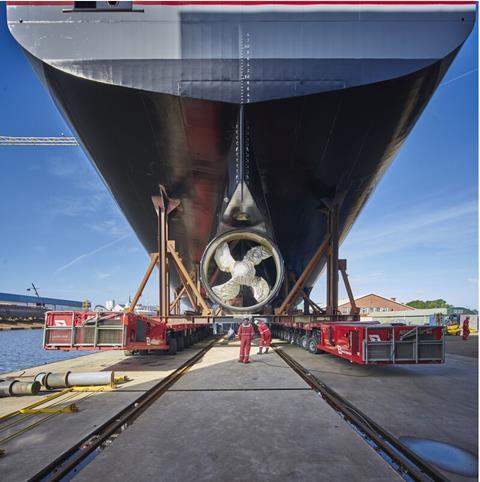The European association of abnormal road transport and mobile cranes (ESTA) has received “exceptionally strong support” from its members and the heavy transport market for its ongoing work to improve safety during the use of SPMTs as well as its intention to establish an internationally accepted training qualification for operators.

Last month, ESTA published a new transport stability guideline for the use of modular hydraulically suspended trailers. ESTA is also progressing plans to develop SPMT operator training through the launch of the European Transport Operators Licence (ETOL), using the structures developed for the European Crane Operators Licence (ECOL).
The stability guideline was published following ESTA’s autumn meetings in Rome and is freely available to ESTA members. It is the result of work carried out by ESTA’s SPMT working group whose member companies come from eight different countries, reflecting the widespread concern across Europe.
The guideline specifies the factors to be considered when verifying the stability and capacity of a modular hydraulically suspended trailer by calculation, assuming that the trailer is operating on a stable surface. It also details the conditions and considerations for local stability of trailers within a transport arrangement and the stability of the cargo itself and is referenced in the DNV ST-N001 Maritime Operations Standard published by DNV.
The guideline will eventually be incorporated into a completely updated best practice guide expected to be published next year. ESTA has now created a specialist “peer review” group that will assess the working group’s recommendations and analysis, feeding back comments and suggestions before publication.
ESTA director Ton Klijn said: “Of course, we have been working on improving our industry’s safety and efficiency for many years – that is what ESTA exists to do. But the truly exceptional response we have received for this project shows just how important is our work in this area.
“We are now working on the next stages of the best practice guide while at the same time developing the organisational structures that will enable us to bring transport operator training and certification into the framework originally developed for crane operators through ECOL.
“We strongly believe that these developments will not just raise safety and efficiency but will also help the industry recruit the operators it needs going forward.”
The companies in the SPMT working group are Collett, Cometto, DNV, Fagioli, Goldhofer, Mammoet, Sarens, Siemens Gamesa, Technip, TII Group and Wagenborg. Membership of the peer review group will be confirmed shortly.
















